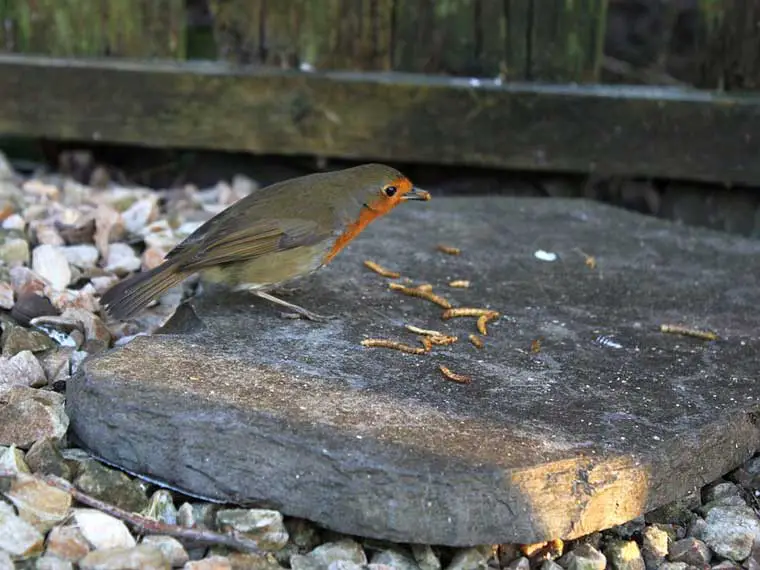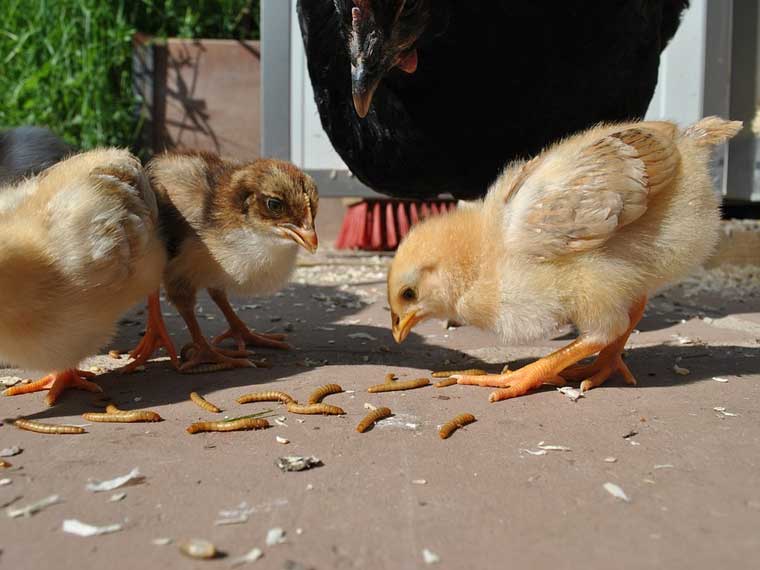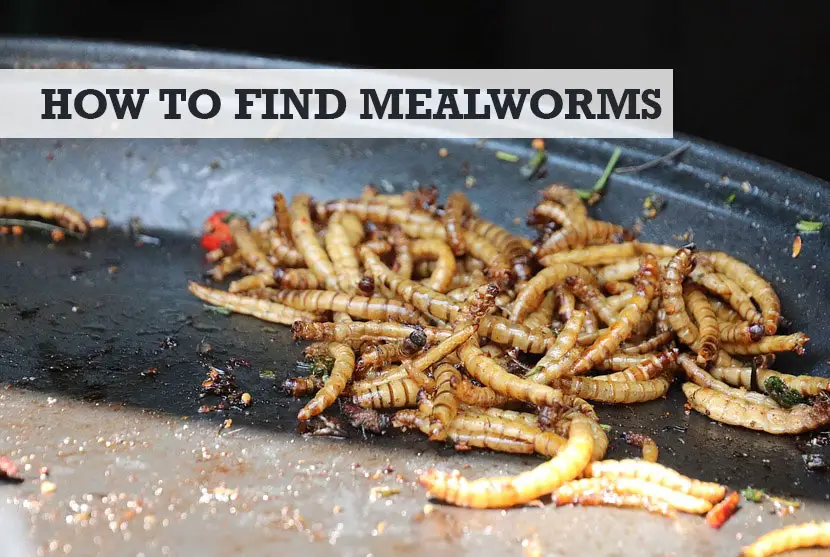If you enjoy feeding the birds as much as I do, you’ve probably wondered where you can find mealworms in your backyard. Sure, it’s easy to buy them from stores, but can you find them in your yard?
Unfortunately, there doesn’t seem to be a lot of information about where to find mealworms outside. Thankfully, I’ve become somewhat of a self-appointed mealworm expert over the last few years and can provide you with an answer to this rather niche question.
Where can you find mealworms in your backyard? Mealworms can be found outside in your backyard usually under decaying logs or piles of leaves, or in bags of grain during the spring and summer months. Fallen trees or branches can also be good hiding spots for them as well.
Attracting and finding mealworms in your backyard
So, that’s the concise answer on where to find mealworms in your backyard. However, if you’re a newbie to finding mealworms, you might benefit from taking a quick browse through the rest of this article.
I’ve gone into some extra detail about the best spots to find mealworms, as well as other related topics, like how you can attract mealworms to your yard, and how their life cycles play a role in everything.

Where can you find mealworms outside?
Aside from backyards, mealworms can typically be found in undisturbed and moist places. They hate the light, so mealworms like to live in much darker areas. In nature, they are mostly found underneath rocks, dead logs, leaves, or occasionally in animal burrows and nests, where they will consume wood, grasses, and grains.
If you have a heavily wooded backyard or garden, you might have success locating them, although they’re more likely to be found in fields and other similar farmyard areas as this is where they like to live.
Handy Hint: You might also find this guide to finding and catching worms in your backyard helpful if you need a fresh supply.
You might be in luck if you have chickens, as they tend to scatter grain all over the areas where they eat. Search in dark areas in a chicken’s coop and you might just find a mealworm or two.
Strangely, mealworms aren’t the biggest fans of life in the wild and much prefer living in environments associated with humans. I’ve provided some further information on this strange behavior below.

Why do mealworms prefer human environments?
Unfortunately for the squeamish, mealworms love living close to humans which is why you find mealworms in backyards and gardens outside. This is because their favorite habitat is food.
If they can, mealworms will proliferate in places like grocery stores, warehouses, and farms, and other buildings that commonly store large quantities of consumables.
Here they will bury into grain or bran-based items. As a result, businesses and companies must be careful to check for mealworms when packaging, sealing, and transporting foodstuffs around the country.
If you are unlucky, you might even find a mealworm in your apple, pear, or tomato as they get their hydration from fruits and vegetables.
How do you attract mealworms?
As I touched on earlier, finding mealworms outside is difficult unless you own chickens or other farmyard birds. But this is the best way to attract mealworm as chickens, geese, and ducks tend to scatter their grain everywhere.
You can try placing rocks and dead branches in your backyard to see if this will attract them.
Personally, I’ve never had any luck with this method.
Instead, you’ll have more luck attracting the mealworm’s adult form, the darkling beetle. Attracting the beetles can be as easy as leaving piles of grain or chunks of bread outside at night, and then capturing them in a container.
How do you breed your own mealworms?
Buying mealworms to feed wild birds or chickens can often end up expensive. That is why I suggest you breed your own.
Once you have captured some darkling beetles, place them in a large container full of cereals, seeds, and vegetables such as tomatoes and potatoes. Over time, they will naturally breed and lay eggs which will then develop into mealworms.
How do you store mealworms?
You probably already know that mealworms make a great treat for bird species that visit the backyard. This is due to mealworms being full of nutritious protein, vitamins, and calcium that birds struggle to find in the wild. Whether you find mealworms or purchase them from a store, you’ll need to find a suitable container to store them in.
Look for a 2 to 5-gallon container and spread it with a mixture of dry oatmeal, wheat bran, and cornmeal. You can also add bird or cat food to the mix to make the mealworms more nutritious for birds.
Next, grab the mealworms and put them into the container, and seal the lid. Make sure you poke a few holes in it but be careful not to make them too large as the mealworms could escape.
Lastly, take the container and store it somewhere dark and cool. Mealworms tend to prefer temperatures around 70 to 80 degrees Fahrenheit.
There are two methods of storing mealworms, storing them in a cool place or keeping them in a refrigerator. The latter option will slow down a mealworm’s growth into an adult beetle and allow you to keep them for longer.
Handy Hint: Did you know that when you find dead worms on your driveway it could be because of moles?
How does the lifecycle of a mealworm work?
Mealworms are the larvae of a type of darkling beetle and not a species of their own. In general, darkling beetles only survive a few months. As a result, the females of the species will lay hundreds of eggs during their short time alive. After a few weeks have elapsed, the eggs will hatch into mealworms.
From here, the mealworms will slowly begin to shed their exoskeletons before reaching the pupa stage of their transformation.
At this point, they will barely move unless prodded or poked, and will not consume any food. Once 2 to 3 weeks have passed, the pupa will hatch into a fully formed darkling beetle. Overall, the whole process takes around 6 months, although this can change depending on external factors.
Conclusion
You might be lucky and find that mealworms like to live in your backyard making them easier to find. If not, I hope my tips on attracting and finding them help. It’s all about the right environment.
You might also like…
- What the law says about letting goats live in your backyard
- Why you keep finding seashells in your yard
- How frogs find water in backyards and gardens
Image in header via https://pixabay.com/photos/mealworms-insect-food-healthy-4233259/

